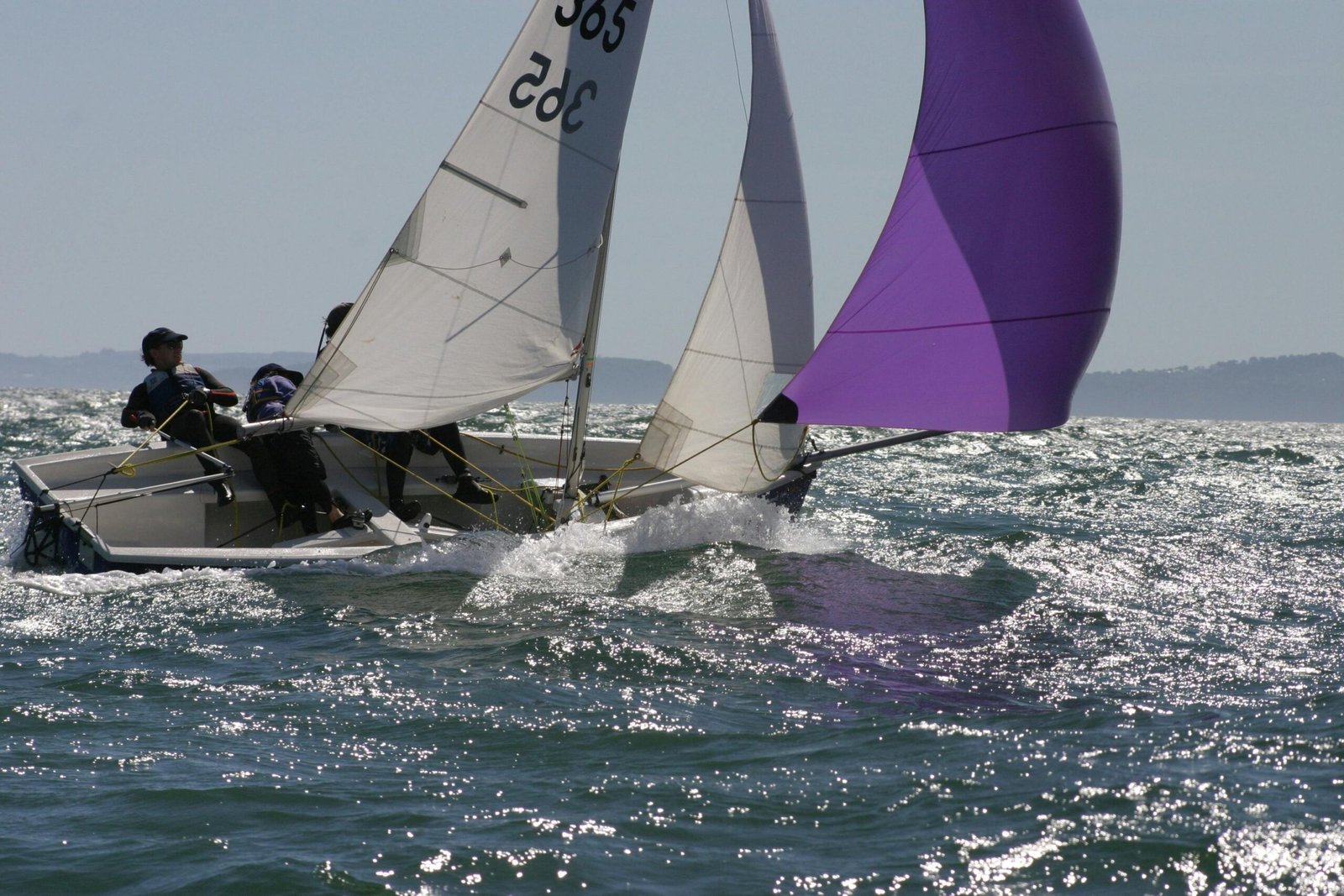The Role of Sails and Understanding Different Types

Sails are the heart and soul of any sailboat. They harness the power of the wind, converting it into the force that propels the boat across the water. Understanding the role of sails and the different types available is fundamental to mastering the art of sailing. In this post, we’ll explore how sails work, the various types of sails, and their specific functions on a sailboat.
Sails function by catching the wind and creating both lift and drag. When the wind blows across the surface of a sail, it creates a difference in air pressure on either side of the sail. This pressure difference generates a lift, which, in conjunction with the boat’s keel, moves the boat forward. By adjusting the angle and tension of the sails, sailors can control the direction and speed of the boat.
Sails allow a boat to travel not only downwind but also upwind by tacking or zigzagging into the wind. This versatility makes sailing a unique and skillful activity, requiring a good understanding of how to manage and optimize the sails for various wind conditions.
Types of Sails
Sails come in different shapes and sizes, each designed for specific purposes. Here’s an overview of the main types of sails you’ll find on most sailboats:
1. Mainsail
The mainsail is the primary sail on most sailboats, located behind the mast, it’s the main driving force of the boat and is used in conjunction with other sails to optimize speed and control.
The mainsail is usually triangular, with the top corner attached to the mast (head), the front edge (luff) attached to the mast, and the bottom edge (foot) attached to the boom. The adjustments to the mainsail are key to balancing the boat and achieving the desired speed and course.
2 Headsail (Jib or Genoa)
The headsail is located in front of the mast, attached to the forestay (a wire running from the top of the mast to the bow), it works in tandem with the mainsail to provide additional lift and balance. A larger headsail is called a Genoa.
Like the mainsail, the headsail is usually triangular. The bottom corner (tack) is attached to the bow, while the top (head) is attached to the mast, the headsail is particularly effective when sailing upwind. Genoa covers more area than a regular jib and is used for maximizing power in lighter winds.
3. Spinnaker
The spinnaker is a large, balloon-shaped sail set in front of the boat when sailing downwind, it catches the wind from behind, providing maximum propulsion in downwind conditions, unlike other sails, the spinnaker is often symmetric and designed to billow out in front of the boat.
The spinnaker is typically used in races or when sailing in light winds downwind. Handling it requires skill due to its size and tendency to catch a lot of wind.
4. Gennaker
The gennaker is a hybrid between a spinnaker and a genoa, flown from the bow of the boat, it’s designed for use on a reach (when the wind is coming from the side) and provides more power than a genoa but is easier to handle than a spinnaker.
The gennaker is asymmetric, combining elements of both the spinnaker and the genoa, the gennaker is ideal for casual cruising when you want to cover more distance with less effort, particularly when the wind is not directly behind you.
5. Storm Sails
These sails are usually smaller and can replace the mainsail or headsail during heavy weather conditions, storm sails are used to maintain control and safety in strong winds.
They are much smaller and sturdier than regular sails, designed to withstand harsh weather, when the wind picks up and the sea conditions become rough, storm sails allow the boat to navigate safely without being overpowered by the wind.
6. Mizzen Sail
The mizzen sail is the smaller sail on a ketch or yawl, located on the mizzenmast, which is aft (behind) the mainmast, it helps with balancing and steering, especially in heavy weather.
Like the mainsail, the mizzen is usually triangular and serves as an auxiliary sail, the mizzen is used to stabilize the boat and aid in maneuverability, particularly in complex wind conditions.
Best Practices for Sail Use
Understanding the different types of sails and when to use them is essential for effective sailing. Here are some tips:
- Balance Your Sails: Keep an eye on how your boat is balanced. Adjusting the tension and angle of your sails can prevent heeling (tilting) too much and help maintain speed.
- Reefing: When the wind picks up, reduce the sail area by reefing the mainsail or headsail. This prevents overpowering and helps maintain control.
- Use the Right Sail for the Conditions: Don’t be afraid to switch out sails based on the weather. A gennaker might be ideal for light winds, while a storm sail is necessary for rough seas.
Sails are more than just pieces of fabric—they are the engines that drive your sailboat. Understanding the different types of sails and how to use them effectively is key to becoming a proficient sailor. Whether you’re out for a leisurely cruise or racing, the right sail setup can make all the difference in your sailing experience.